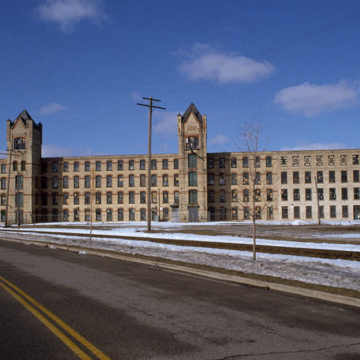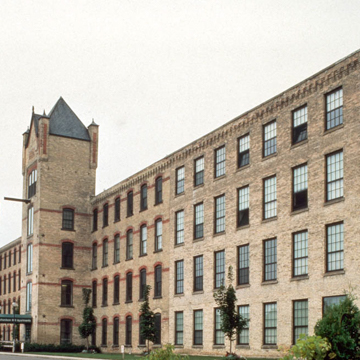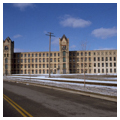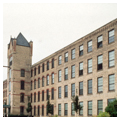You are here
Richardson Mill Apartments (Richardson Silk Mill—Mill Number Four)
For nearly fifty years the people of Belding walked down to the Flat River to work in the Richardson Silk Mill. Before the advent of rayon, nylon, and other synthetic products in the 1930s, the mill employed some 1,200 silk workers, more than a quarter of the town's population. This mill was the first of four mills owned by Belding Brothers and Company in Belding. In 1855, after locating in Patterson's Mill, which was renamed Belding in 1891, the Belding brothers, David (1832–1907), Milo (1833–1917), Hiram H. (1835–1890), and Alvah N. (1838–1925), sold silk thread from their home; they expanded and ultimately organized the company in 1863. The mill was built by George P. Richardson, formerly manager of the Belding brothers' Cincinnati office. On its completion it was sold to Belding Brothers and Company. The mill housed the manufacturing of silk thread, including all the equipment necessary to transform bulk baled silk into dyed and spooled sewing thread.
The Richardson Silk Mill is a fine example of late-nineteenth-century industrial architecture in the Round Arch mode, comparable to the best in Lowell and Lawrence, Massachusetts. The mill is a rectangular, flat-roofed factory with load-bearing exterior walls of yellow brick. It has an internal support system of metal posts and heavy wooden beams. The double floors are four inches of solid oak. This construction technique, with heavy beams, was known as “slow-burning construction” and was standard in industrial building until the advent of reinforced concrete. Two pinnacled and pyramidal-roofed square towers containing stairwells, an elevator, and water towers rise over the mill as symbols of corporate power. The towers also kept the vertical circulation outside the main body of the mill, thus reducing the danger of fire spreading from floor to floor. Installed within the mill were banks of spinning and winding machines powered by a suspended drive that extended the length of the structure. Frederick A. Washburn of Rockville, Connecticut, supervised construction and installed the machinery. The use of whitish-yellow brick together with bands of red brick, as evidenced in the brickwork in the Holland–Grand Rapids area, lends a distinct regional character to this industrial example. In 1986 the mill was renovated into more than seventy apartment units and still serves proudly as the symbol of “Michigan's Silk Mill City.”
Writing Credits
If SAH Archipedia has been useful to you, please consider supporting it.
SAH Archipedia tells the story of the United States through its buildings, landscapes, and cities. This freely available resource empowers the public with authoritative knowledge that deepens their understanding and appreciation of the built environment. But the Society of Architectural Historians, which created SAH Archipedia with University of Virginia Press, needs your support to maintain the high-caliber research, writing, photography, cartography, editing, design, and programming that make SAH Archipedia a trusted online resource available to all who value the history of place, heritage tourism, and learning.





